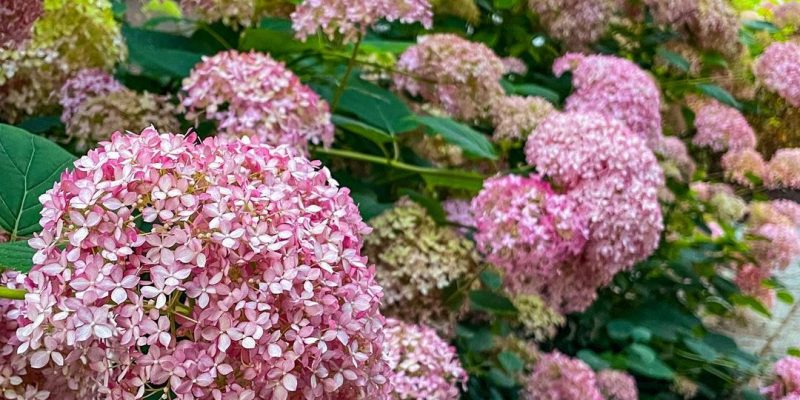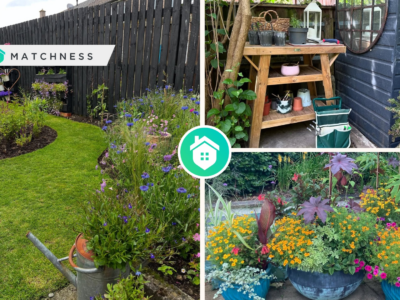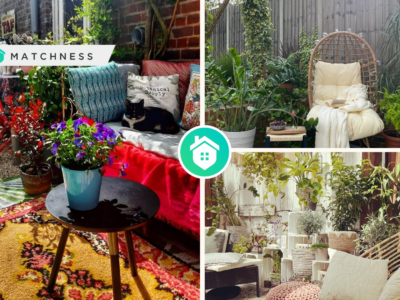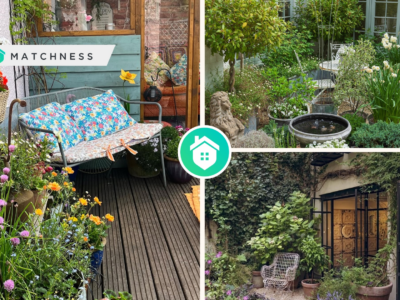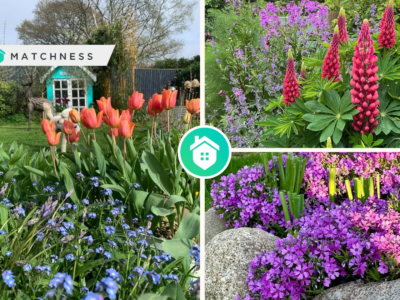Spring is a truly splendid season, thanks to the abundance of flowers that grace the landscape. How delightful would it be if those blooming wonders could persist throughout the summer? By adorning your yard with specific flowering bushes, you can relish their vibrant hues and delightful scents for an extended period, requiring minimal upkeep. Presented below are ten early-blooming bushes that will continue to adorn your surroundings throughout the entire summer.
Neon Flash Spirea (Spiraea japonica ‘Neon Flash’)
The ‘Neon Flash’ spirea showcases its blossoms in the latter part of spring, yet manages to retain some of its vibrant color well into early summer. This particular spirea variety is classified as a reblooming bush, belonging to the group of shrubs that bloom later in the summer. However, not all spireas are solely valued for their flowers. Take, for instance, the Spiraea ‘Goldflame,’ which is primarily sought after for its captivating foliage.
Here are the specifications for the ‘Neon Flash’ spirea:
- USDA Zones: 3a to 8a
- Sun Exposure: Full sun to partial sun
- Height: 3 feet
- Soil Needs: Well-drained, loamy soil enriched with compost
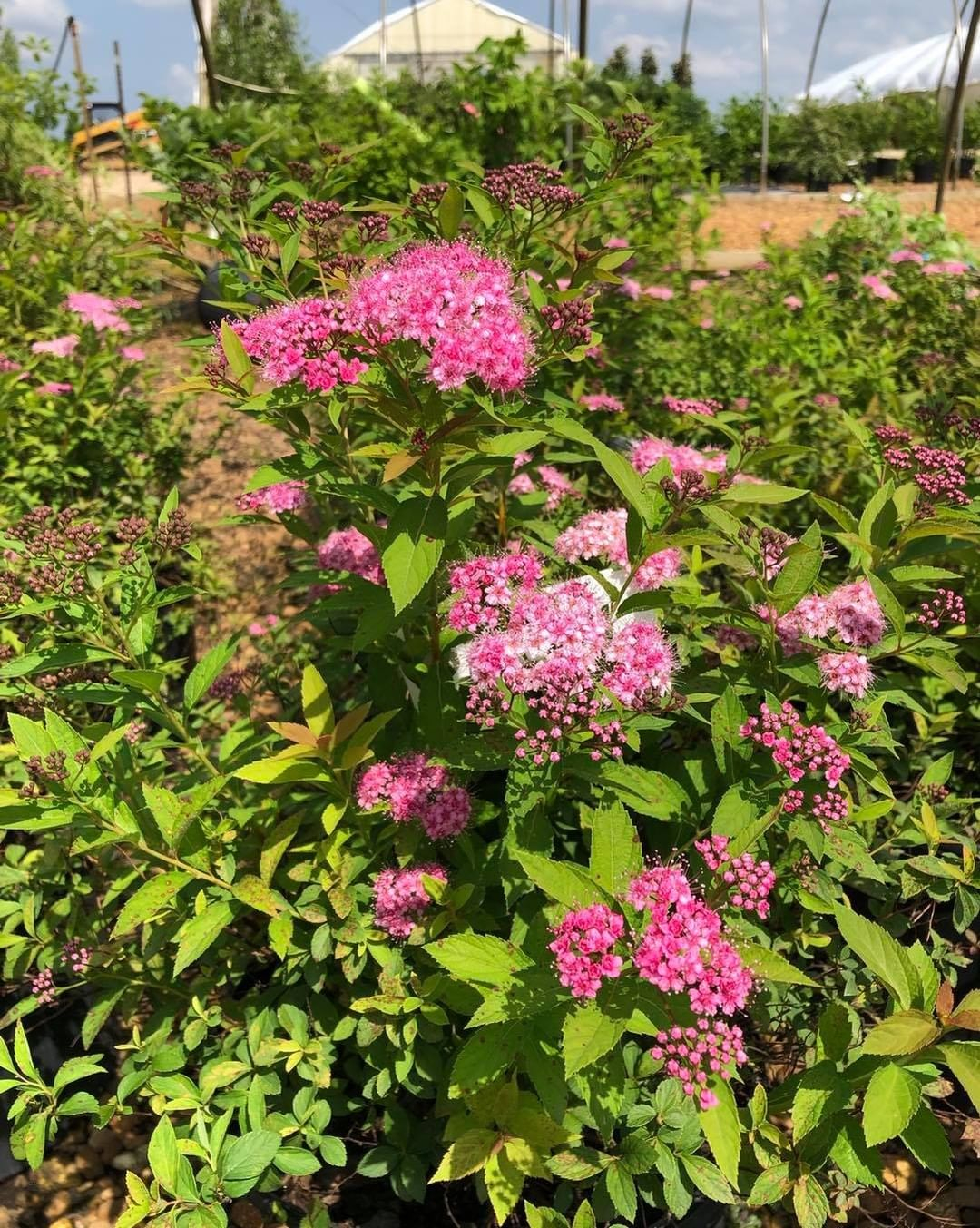
Bees, butterflies, and other living creatures are big fans of this spirea flowering shrub. With brilliant blooms every year, especially on the ‘Neon Flash’ variety pictured, we have to admit that we’re big fans too! Neon Flash Spirea from @dabneynursery
Candy Oh! Rose (Rosa ‘Zlemartincipar’ Candy Oh!)
A number of gardeners tend to avoid planting roses due to the misconception that these shrubs, which bloom in early summer, are excessively challenging to cultivate. However, this perception is unfortunate, as growing roses is not inherently difficult, especially when you opt for specific types of roses. The genus Rosa encompasses various categories, and landscape roses, such as Candy Oh!, are remarkably effortless to cultivate.
Here are the specifications for Candy Oh! roses:
- USDA Zones: 4 to 9
- Sun Exposure: Full sun
- Height: 3 to 4 feet
- Soil Needs: Moderate fertility, well-drained, and consistently moist
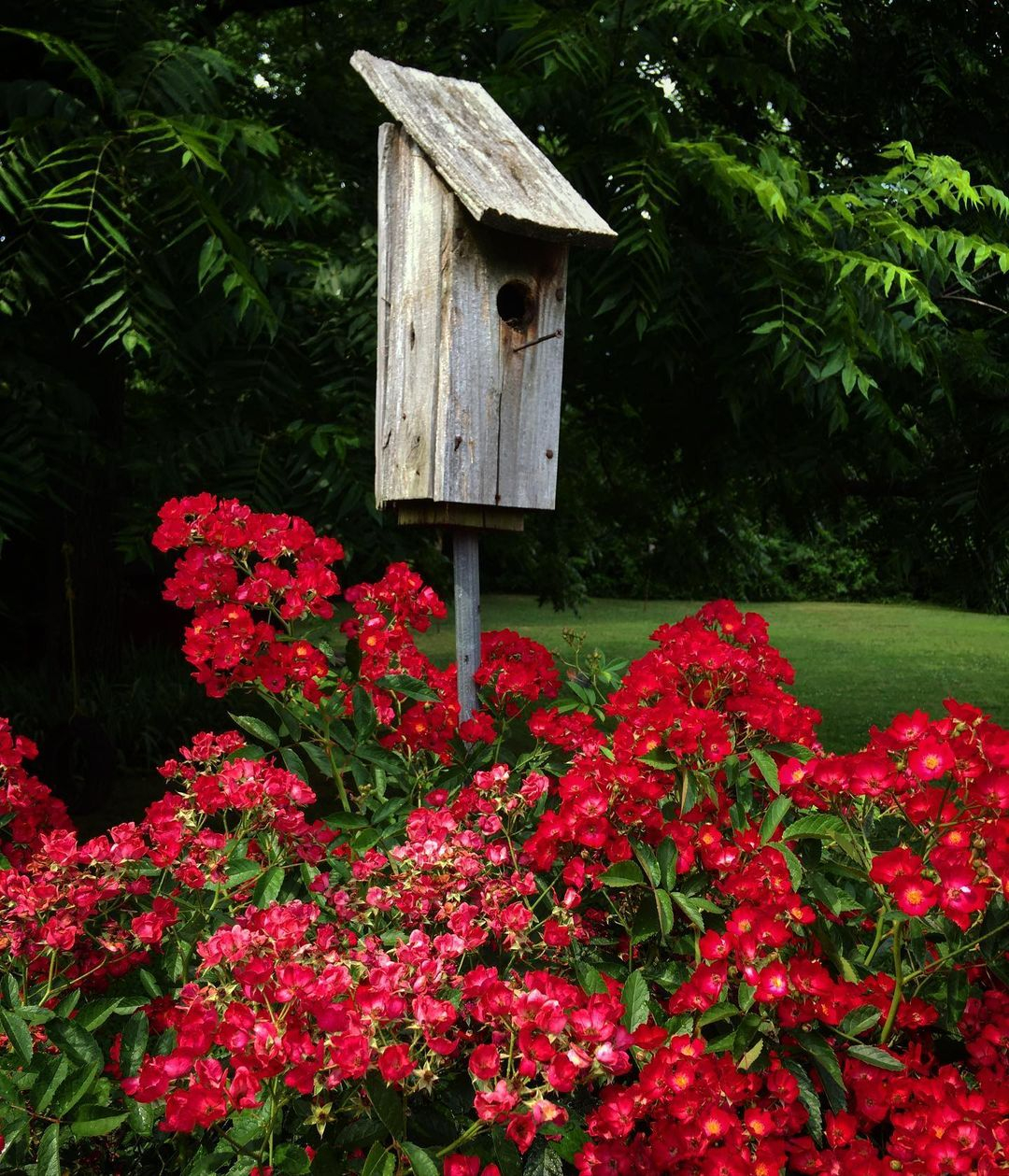
Candy Oh! is not only easy to cultivate but also easy to grow. This flower looks best when it first blooms, as it has a yellow center that stands out at that time. Candy apple red flowers all summer long! Candy Oh! Rose from @mrsrosediva
Invincibelle Spirit Hydrangea (Hydrangea arborescens ‘Invincibelle Spirit’)
On occasion, Americans commemorate the 4th of July festivities by incorporating red, white, and blue flowers into their flower beds. One option that comes close to fulfilling the red criterion is the Invincibelle Spirit hydrangea, which was bred at the Mountain Horticultural Crops Research Station of North Carolina State University. While its initial blooms possess a red hue, the flowers gradually transition to a pink shade.
Here are the specifications for the Invincibelle Spirit hydrangea:
- USDA Zones: 3a to 9a
- Sun Exposure: Full sun to partial shade
- Height: 4 feet
- Soil Needs: Fertile, loamy, well-drained, and consistently moist
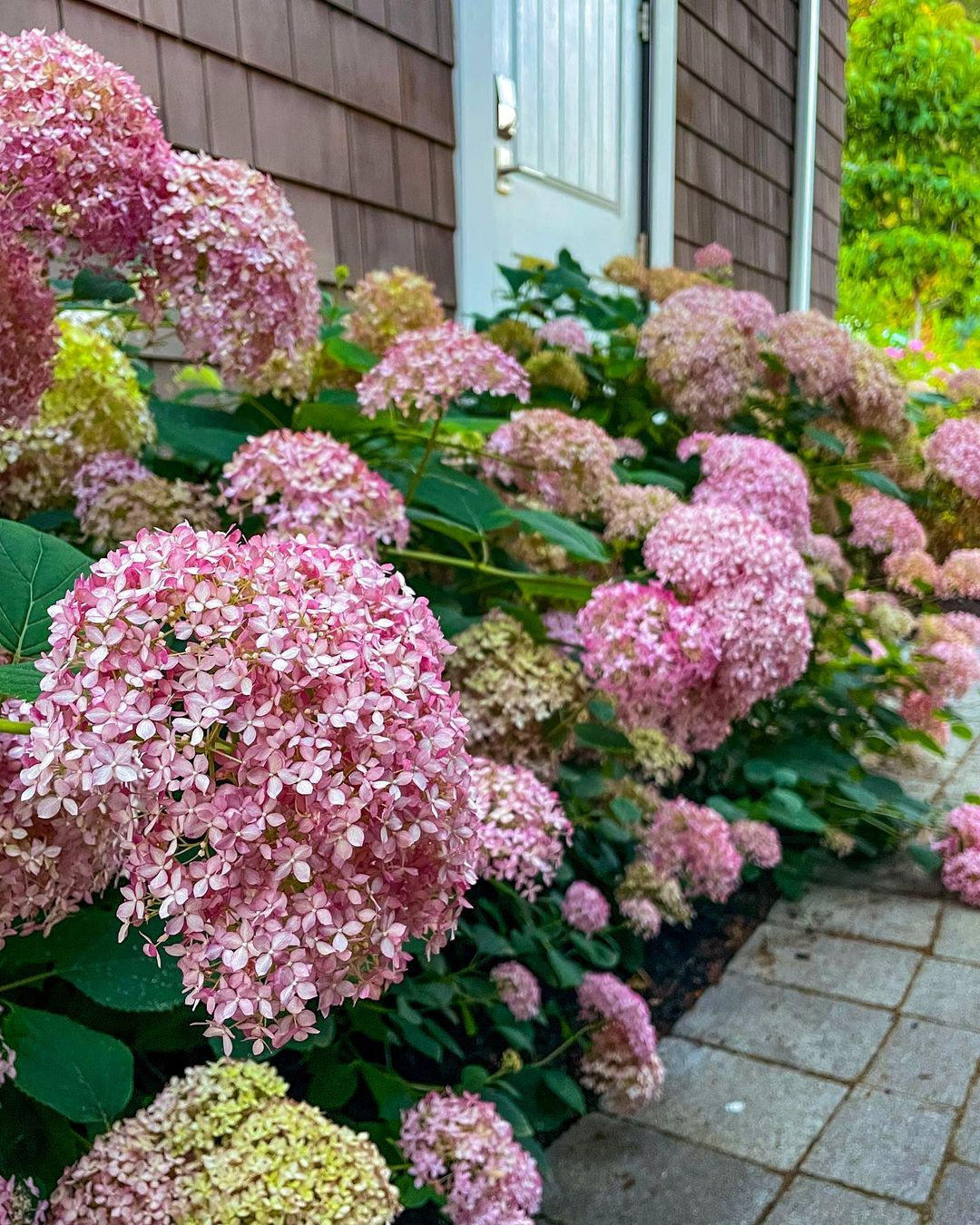
This one flower, hydrangea,” is unbeatable! This hydrangea blooms reliably each year on new wood, producing pretty pink flowers on strong stems in mid-summer and repeating sporadically into the fall. Invincible Spirit Hydrangea from @margaretvalleylandscaping
Incrediball Hydrangea (Hydrangea arborescens ‘Abetwo’ Incrediball)
With its striking flower head, this particular hydrangea variety boasts an impressive display. Although it may lack vibrant colors, its size more than compensates for it. However, there is one aspect to consider: similar to other larger flowers like those found on common peony plants (Paeonia lactiflora), the blooms have the tendency to accumulate rainwater, causing them to droop under the weight. Should this pose a concern, it is advisable to provide support by staking them.
Here are the specifications for this white hydrangea:
- USDA Zones: 3a to 8a
- Sun Exposure: Full sun to partial shade
- Height: 4 to 5 feet
- Soil Needs: Rich, consistently moist soil

Incrediball Hydrangea plant can be used in the landscape in many different ways. You can plant them en masse along property lines to form borders, or alternatively, incorporate them into foundation plantings. These shrubs are considered fast-growing and are usually planted in the fall. Incrediball Hydrangea from @gardenerinlove
Nikko Blue Hydrangea (Hydrangea macrophylla ‘Nikko Blue’)
When grown in acidic soils, the Nikko Blue hydrangea produces lovely blue flowers. This particular cultivar can be classified in two different ways, depending on which aspect of the plant you are focusing on. When considering its foliage, it falls into the category of bigleaf hydrangea. However, when examining its flowers, it is classified as a mophead hydrangea.
Despite its cultivar name, it is important not to assume that Nikko Blue will always bear blue flowers. Similar to other varieties of H. macrophylla, the color of its blooms is influenced by the pH level of the soil.
Here are the specifications for the Nikko Blue hydrangea:
- USDA Zones: 6a to 9a
- Sun Exposure: Morning sun, followed by afternoon shade
- Height: 4 to 6 feet
- Soil Needs: Well-drained and fertile soil
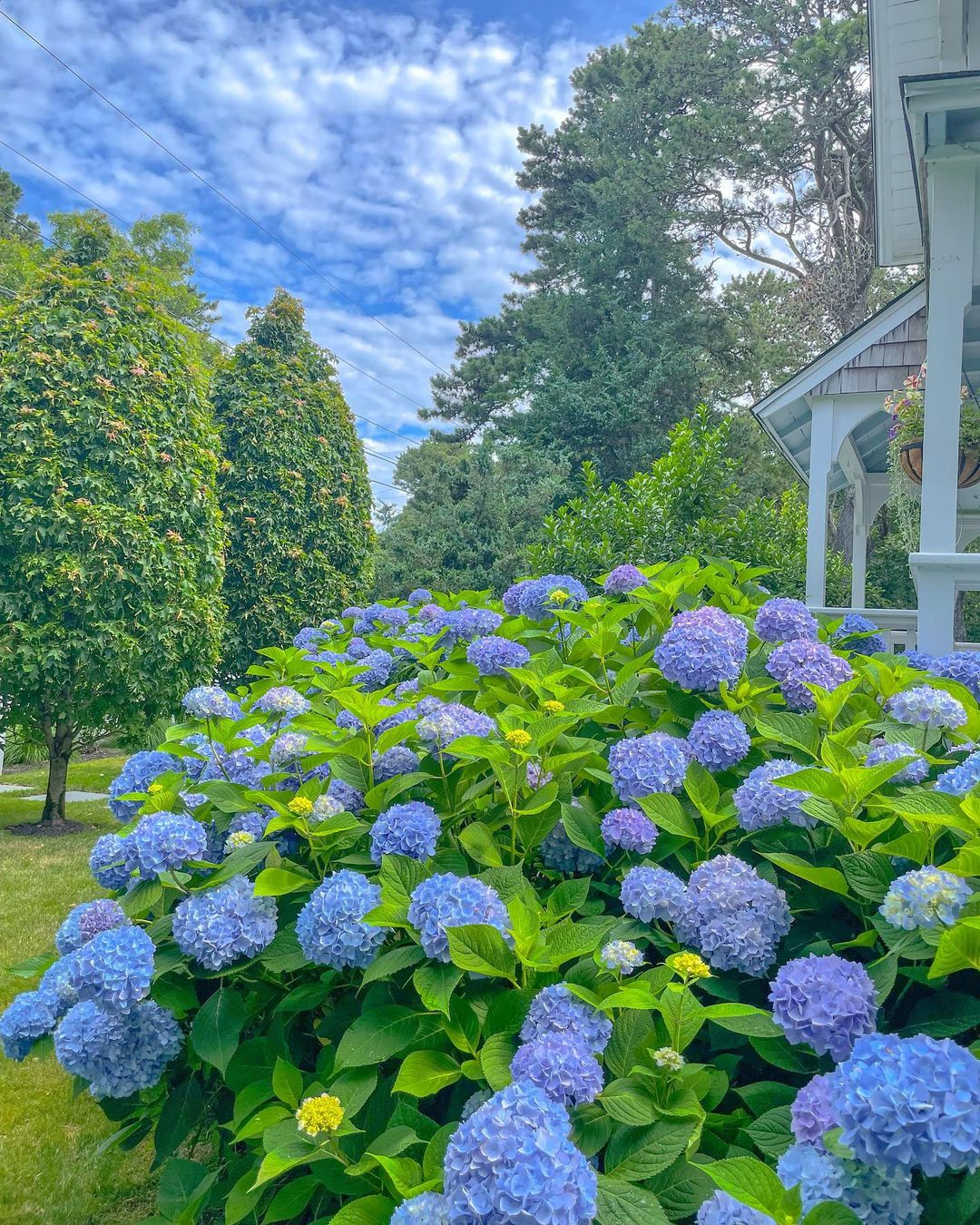
Nikko Blue hydrangea is my favorite among garden hydrangeas. It always impresses me with its delicate color and blooms every year. This type of hydrangea prefers partial shade over full sun. In the sun, this flower languishes and looks much worse. Nikko Blue Hydrangea from @secondnaturedesignsmv
English Lavender (Lavandula angustifolia)
Among the featured plants, the English lavender stands out as the most compact. In fact, it is often regarded more as an herb than a shrub. By ensuring it is planted in well-draining soil, you can enjoy its consistent and effortless blooming during the early summer for many years, requiring minimal upkeep. Aside from its charming blossoms, this plant is highly esteemed for its distinctive silvery leaves.
Here are the specifications for English lavender:
- USDA Zones: 5a to 9a
- Sun Exposure: Full sun
- Height: 2 to 3 feet
- Soil Needs: Well-drained soil
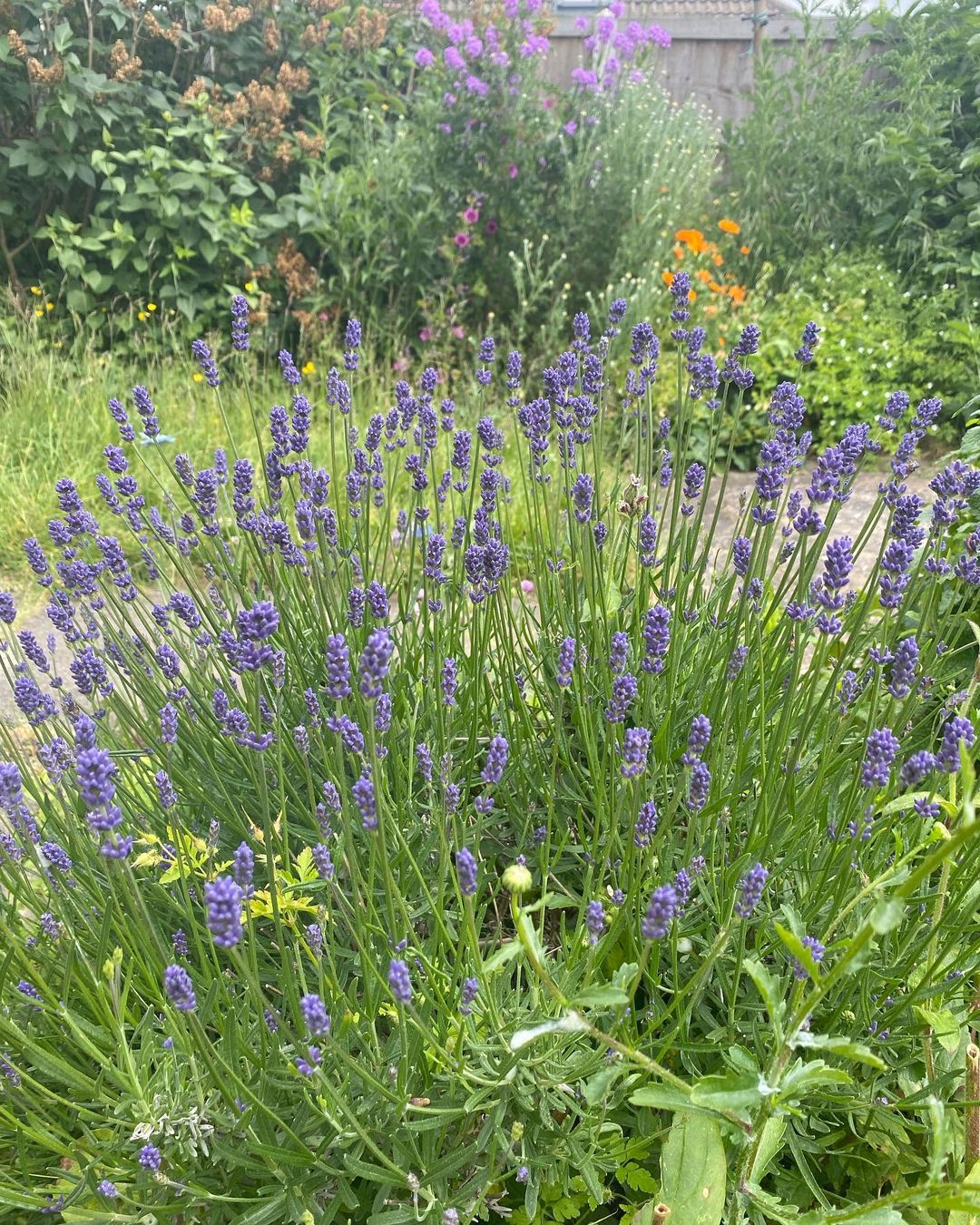
English lavender is one of the most cold-resistant varieties of lavender, and certainly one of the most attractive. This plant requires full sunlight to produce the prettiest and most fragrant flower spikes. English Lavender from @begona.hernandez
Smoke Bush (Cotinus coggygria)
The smokebush, also recognized as the smoketree, stands out among the array of shrubs found in landscapes due to its distinctiveness. Its clusters of pink flowers bear a striking resemblance to billows of smoke, hence its common name. Enhancing the visual appeal of your yard, certain cultivars of this shrub display purple leaves. With an upright and multi-stemmed growth habit, the smokebush adds unique character to any landscape.
Here are the specifications for the smokebush:
- USDA Zones: 4a to 8a
- Sun Exposure: Full sun
- Height: 10 to 15 feet
- Soil Needs: It thrives in poor soil, but proper drainage is essential.
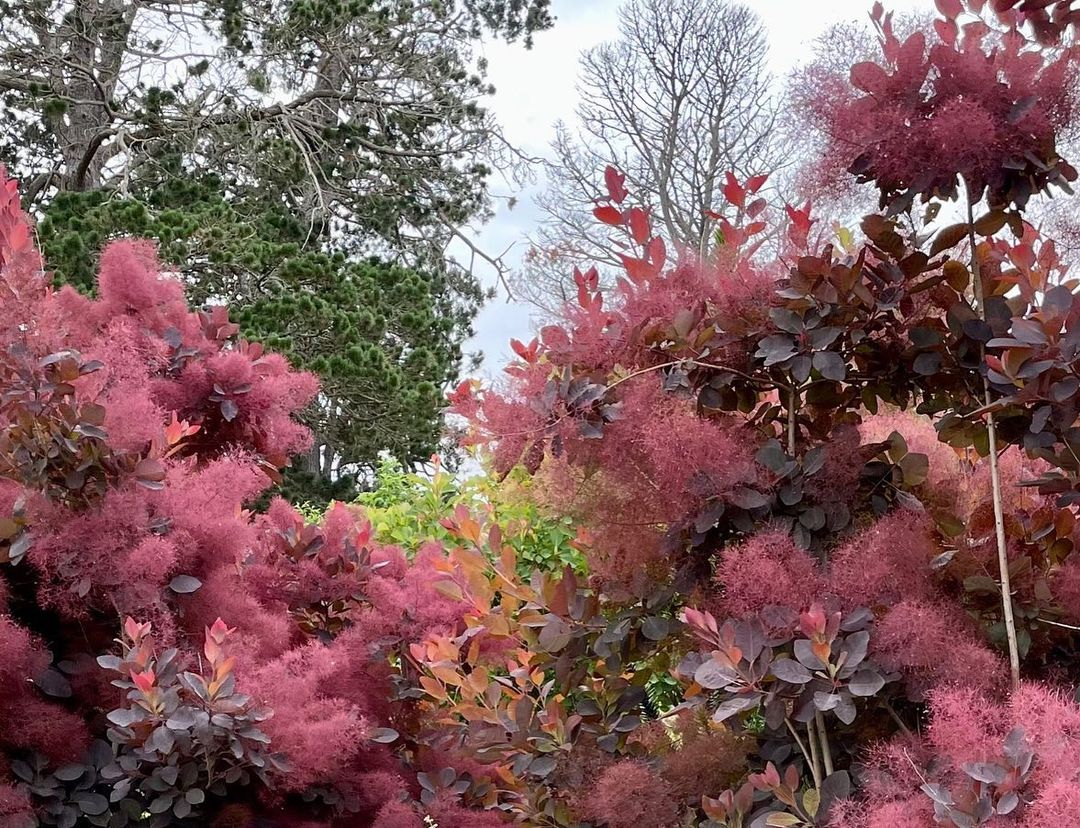
Unlike the former, smoke bushes are often used as individual specimen plants and, in larger landscapes, can also be planted as informal screening hedges. It should be planted in full sun to keep the plant bushy. Smoke Bush from @alisonmackayartist
Miss Kim Lilac (Syringa pubescens subsp. patula ‘Miss Kim’)
Miss Kim, a variety of lilac shrub, differs from the more familiar Syringa vulgaris in several ways. One notable distinction is that Miss Kim blooms later than its well-known counterpart. Additionally, those who prioritize the fragrance of lilacs often prefer Syringa vulgaris. However, if you desire a shrub that brings vibrant color to your landscape during the early summer, Miss Kim certainly has a place.
Here are the specifications for Miss Kim lilac:
- USDA Zones: 3b to 8b
- Sun Exposure: Full sun
- Height: 4 to 9 feet
- Soil Needs: Loamy soil
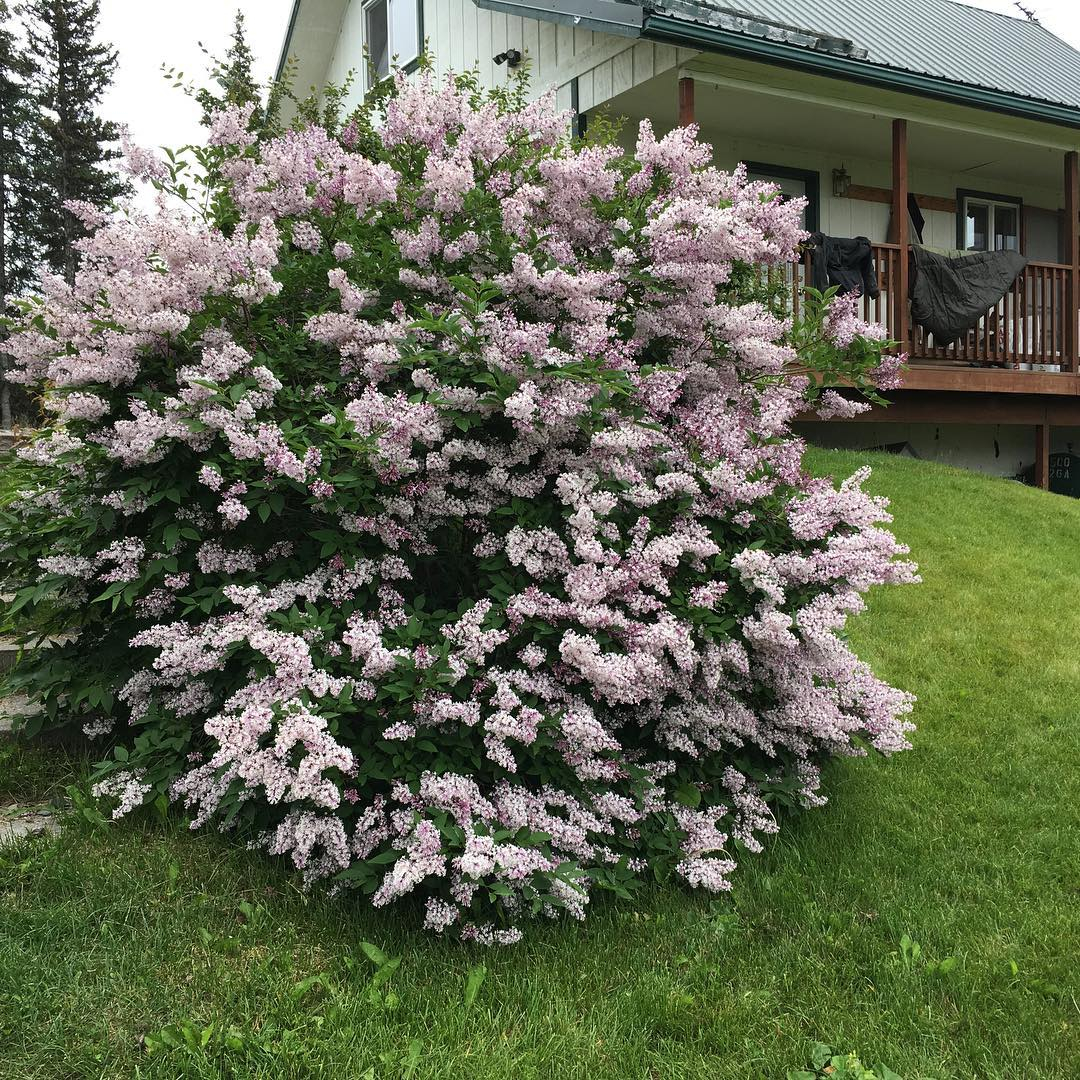
More sun equals more flowers, so planting them appropriately is a must. Miss Kim’s thick, green leaves will turn a very attractive burgundy in the fall. It has the best autumn color of all lilacs. Miss Kim Lilac from @akwagonwheel
Oakleaf Hydrangea (Hydrangea quercifolia)
The Oakleaf hydrangea provides year-round visual appeal for your landscaping. While it blooms with classic hydrangea flowers during the early summer, this shrub offers much more. Its fall foliage alone makes it worth growing, adding to its allure. In the Northern landscape, the Oakleaf hydrangea is a must-have shrub, providing a range of captivating features.
Here are the specifications for Oakleaf hydrangea:
- USDA Zones: 5a to 9a
- Sun Exposure: Full sun to part shade
- Height: 4 to 8 feet
- Soil Needs: Rich and well-drained soil
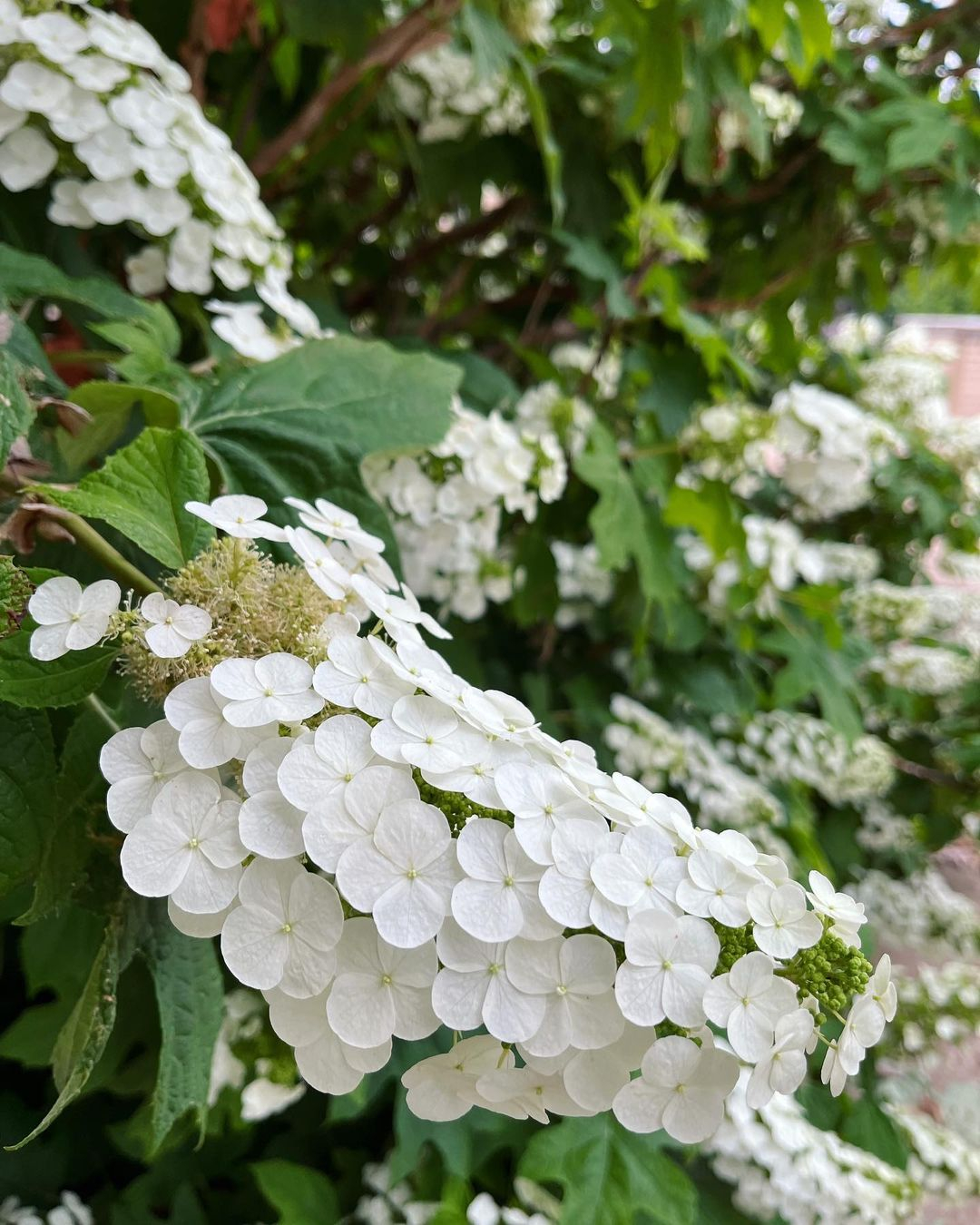
A superb Oak Hydrangea that has a beautiful elongated flower is Hydrangea quercifolia ‘Snowflake’. The flower starts out white and will eventually have pinky-peach tones. It’s a great choice for smaller gardens. Oakleaf Hydrangea from @tulsagardencenter
Virginia Sweetspire (Itea virginica)
The primary allure of the Virginia sweetspire lies in its exceptional display of fall colors. While it happens to bloom during the early summer, its spiky white flowers, although moderately attractive when abundant, are overshadowed by the captivating autumn foliage. The vibrant hues of its leaves are the true selling point of this shrub, making the June blooms a delightful bonus.
Here are the specifications for the Virginia sweetspire:
- USDA Zones: 5a to 9a
- Sun Exposure: Full sun to partial shade
- Height: 2 to 5 feet
- Soil Needs: Requires humus-rich soil that is moist but well-drained.
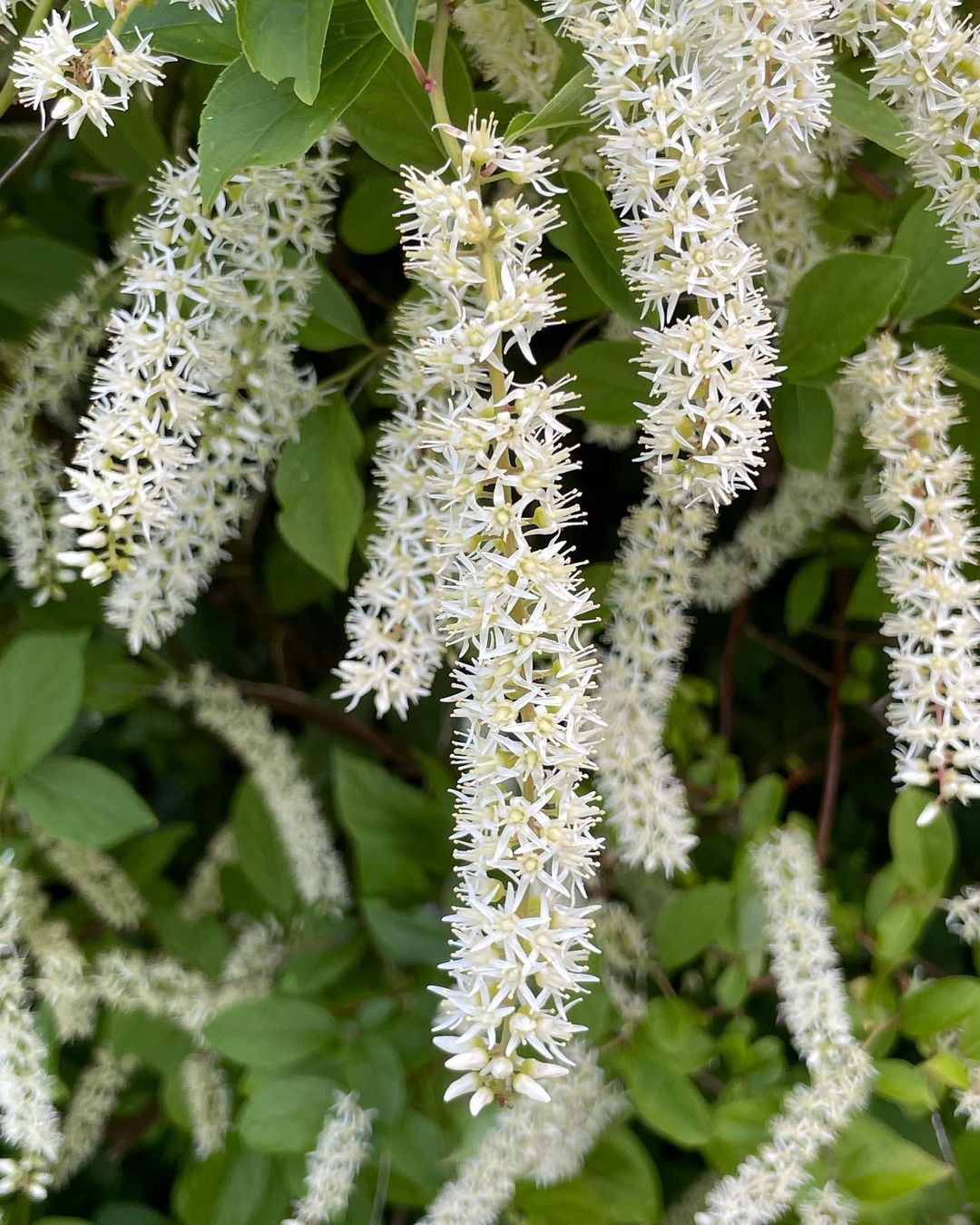
Virginia Sweetspire is a great landscape plant that seems to be getting used more and more by designers, architects, and gardeners lately. This deciduous shrub has lushly colored fall foliage and keeps its leaves well into the winter. Virginia Sweetspire from @jjcolbourne


